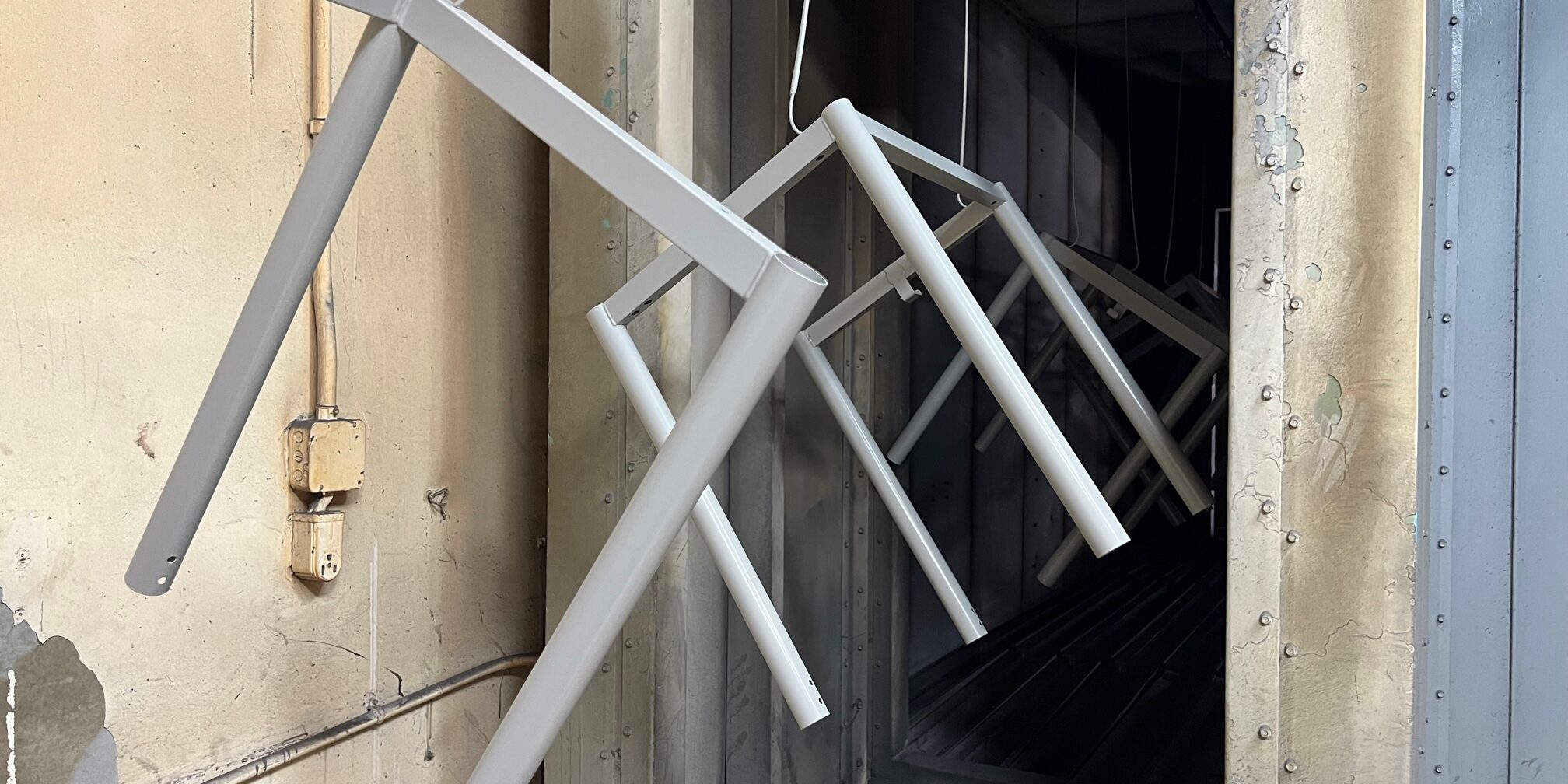Powder coating is a versatile, reliable, and robust solution for finishing a wide range of products. Using the right temperature for powder coating makes it possible to finish fabrications in a variety of colors, textures, and durability to suit virtually any use case or need.
Not only does this innovative dry powder finishing process deliver a smooth, consistent result, but it can also offer greater durability and longevity than traditional alternatives such as conventional paint. However, unlocking the benefits of powder coating requires a commitment to following the right practices, from choosing the correct coating for each project, to ensuring items are carefully cured.
Temperature is one of the most important factors influencing the results of any powder coating project. It influences how well a powder will adhere to the substrate material, how smooth the finished results will be, and even the long-term performance of the coat. PCS follows ISO 9001:2015 certified quality management processes in all projects, to ensure each coating can achieve the highest level of durability, without compromising on visual appeal.
Factors Affecting Powder Coating Temperature
The temperatures used during the powder coating process can vary depending on a number of factors. Everything from the environment of the curing environment (such as the ambient temperature and humidity of the powder coating location) to the conveyor speed can make a difference to the perfect temperature for any project.
Some of the main factors which affect powder coating temperatures include:
- The type of powder: There are various different types of powder which can be used in the powder coating process to achieve specific results. Different powders, made with specific materials, can require a unique cure temperature. For instance, polyurethane and polyester powder may require higher curing temperatures than epoxy powder.
- The material being coated: Different materials, from glass to metal, have their own unique thermal properties which must be considered during the powder coating process. A temperature commonly used for curing powder on a metal surface may be too high for a glass alternative.
- Part geometry: The size and shape of the object being coated can also influence the temperature required in the powder coating process. Parts with more complex shapes may require higher temperatures to ensure coatings have been distributed evenly and smoothly.
- Coating thickness: The thicker the powder coating applied to a product, the higher the temperature may need to be to ensure a durable curing result. Thicker coatings generally need to be heated to higher temperatures to ensure all of the powder particles are effectively melted and fused with the substrate material.
- Airflow and air velocity: The airflow and velocity in the curing oven can impact the temperature of the part being coated. Good airflow and velocity helps to ensure a smoother, even powder coat finish, with equal levels of durability throughout.
The Ideal Temperature Ranges for Powder Coating
Defining the ideal temperature ranges for powder coating processes can be complex for those without a great deal of prior experience in the industry. As mentioned above, various factors can influence the ideal temperature, which is why companies like PCS carefully assess each project prior to initiating the powder coating process. Notably, the ideal temperature ranges for powder coating also vary throughout each part of the process.
In general, the guidelines for each stage in the process will be as follows:
- Preheating: In some cases, preheating the substrate or item material before a powder is applied can help to improve surface adhesion and remove any problematic contaminants. The preheating temperature used by most companies usually ranges between 200 and 250 degrees Fahrenheit, for metal products.
- Coating: During the coating process, it’s important to ensure powder is applied at the right temperature to facilitate the bonding process. Usually, the ideal temperature for most powders is somewhere between 65 and 80 degrees Fahrenheit, depending on the powder being used. The right temperature range helps to ensure a smooth finish, and prevents powder from clumping when being applied to a material.
- Curing: The curing temperature is one of the most important things any powder coating professional will consider when completing a project. The exact curing temperature used in any situation will vary depending on the type of powder being used, the material substrate, and the thickness of the coating. Ideal curing temperatures can range between 350 and 420 degrees Fahrenheit with the most common forms of thermosetting powders.
How to Monitor and Control Temperatures for Powder Coating
Companies like PCS use careful processes and state-of-the-art technologies to effectively monitor and control the temperatures used throughout the full powder coating process. Often, temperature measurement tools such as infrared thermometers and thermocouples can be used to track the temperature of the coated material, the oven used for curing, and even the preheated powder.
Temperature controlling technologies can also be used to regulate the temperature of devices throughout the powder coating process. Some solutions can even automatically adjust the oven temperature during the curing stage, to maintain consistent results. Other solutions allow professionals to leverage simple oven timers to manually manage the temperature of their curing ovens.
Airflow and ventilation equipment is also important when controlling the temperature of a powder coating process. The right airflow and ventilation is essential for maintaining the desired temperature of a solution, and preventing either overheating or underheating issues. These technologies are often used alongside insulation tools which can help to prevent heat loss during the curing stage.
The Effects of Incorrect Temperature of Powder Coating
Temperature can make or break the success of a powder coating project. If a product isn’t preheated correctly, the powder may not adhere as well to the surface. If coatings aren’t applied at the right temperature, they could clump and cause inconsistencies in the finished result. Changes to curing temperature can be particularly problematic.
If the curing temperature for the powder coating process is too low, the powder may not melt and fuse properly, leading to a rougher, inconsistent finish which may be more prone to peeling or cracking and corrosion. Alternatively, if the curing temperature is too high, the coating may melt and distribute unevenly, leading to less protection on certain parts of the material.
The biggest side effects of improper temperatures in powder coating include:
- Under curing or uneven curing: Powder coating requires professionals to adhere to strict temperature guidelines to ensure powders can fuse to the surface being covered. If the temperature is incorrect, this can lead to an incomplete cure, adhesion issues, and even a premature failure and corrosion of the coating. Under curing can result in uneven finishes, and less durability for the finished product overall.
- Overcuring: When a product is overcured, due to an elevated temperature, it’s more likely that the powder will melt and run unevenly across the product surface. This can lead to inconsistent patches of covering. Similar to under curing, overcuring damages the durability of the finished product, and influences the final appearance of the item.
- Burn off: When temperatures are extremely high during the curing, application, or preheating process, this can lead to “burn off”, where certain parts of the powder coating begin to crack, peel, or flake. These defects lead to a less professional result, and can even damage the underlying material in some cases.
- Poor adhesion: Powder coatings need to be heated, applied, and cured at the right temperatures to ensure excellent adhesion. When the temperature is just right, it leads to a smooth and even covering. When the temperature is too high or low, the powder may not fuse correctly to the material, leading to surface defects and inconsistency.
- Color deviation: Companies like PCS offer powder coating solutions in a range of colors, textures, and finishes. However, when these powders are heated at the wrong temperature, the coating can change color and lose its appeal. This is particularly problematic when dealing with specialist finishes like metallic or pearlescent coatings.
Choosing the Perfect Powder Coating Temperatures
Ultimately, maintaining the correct temperature through each stage of the powder coating process is crucial to delivering exceptional, durable results. However, getting the temperature right can be a complex process, which is why it’s such a good idea for anyone considering a powder coated finish to contact the right experts or team to help with their project.
Working with a professional like PCS on your powder coating project ensures you’ll be able to get the best possible results every time, with carefully monitored temperature controls. Contact us today to request a quote for your powder coating needs.









